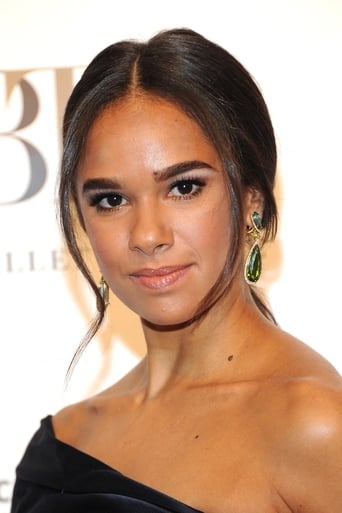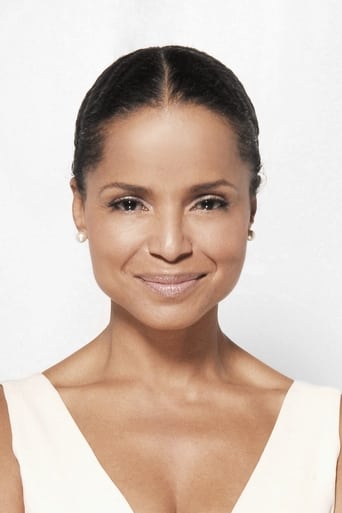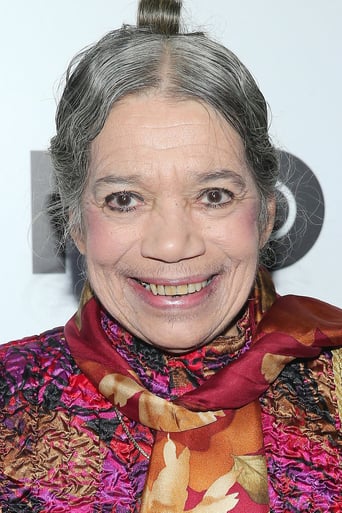Amari-Sali
A Ballerina's Tale focuses on is Misty Copeland, a young woman who began her career at 13, a late start in the art form, and even in the modern age, faced great prejudice. Not in a similar fashion to her predecessors, like the visibly seen Raven Wilkinson, but between being a Black woman, as well as not fitting into George Balanchine's vision of the perfect ballerina, a lot of her professional career was an uphill battle.Of which, largely remains unseen. Which isn't to say Copeland's struggles aren't documented, but more so title cards provide you details than imagery of the blood, sweat, and tears which come from dance practice or her having what could have been a career-ending surgery. Nonetheless, in this overview of Copeland's career, you learn about her, her profession, and though she is being touted as the first Black women in many areas of ballet, the film makes sure to pay homage, and have predecessors seen, so that anyone watching will see there is a community, and Copeland isn't just an exception.HighlightsThough I have gone to ballets before, and likely will again in the future, I am not someone who knows all the technical terms, nor the history. Within A Ballerina's Tale, however, a basic overview, or rather foundation, is given so that you are made aware just enough without being overwhelmed. I liked that while Misty was given the title "The First Black…" she made it a point to not make it all about her. She has her title, but wants to make sure you know who Raven Wilkinson is, wants you to be familiar with the other people who, even if they don't get the credit, did pave the way so that Misty didn't have the full-on loneliness which comes from being the first non-white person in an industry.Within the film it features multiple instances of her performances caught on film, which I enjoyed since we see her practice so much, even post-surgery. So to see how much talent, focus, and drive she has really pushed multiple ideas. The main one being: ballet is no joke. For whether you are physically seeing, through an X-ray, the damage it did on Copeland's body, hearing what many would consider horror stories, and Copeland pushing the idea her pain tolerance is almost superhuman, to not leave the film respecting the madness and love these performers have, I think would be impossible.Lastly, I have to say I loved the film directly addressing race, and showing Black women having comradery. For among the representation Copeland brings to ballet, I also believe that the film brings the idea that just as she shouldn't be alone on stage, no Black person, or person of color in general, should feel they will be alone in the audience. For while, as one of her supporters note, there perhaps aren't a lot of men interested in the art form, that is changing. Low PointsBeing that we are told Copeland is one of 6, I did find it odd that we don't see any member of her family throughout the movie. For while I do feel we get a strong introduction to her professional life, her personal life is almost completely absent. Which I'm sure may be welcomed by those who may care only about her career, but it leaves the film fractured. To put it another way, it has a Beyoncé documentary style. Something in which everything is tightly controlled and manufactured for consumption, to the point nothing seems real or raw. You see what you are meant to see and hear what you are meant to hear, and nothing which doesn't imply perfection, and the most marketable person around will get to you without someone breaking Copeland's trust.On The FenceWith the large amount of people introduced, I did wish that the name cards would have appeared more than once. For while I latched onto who her manager was, there were other names in there which I thought would have just had one segment and never be seen again, and when they popped up later in the film I struggled to remember who they were.Overall: Worth SeeingLet me start off by admitting that this isn't like the majority of the films placed within the "Worth Seeing" label. For one, this isn't something I think is of universal interest, nor is it on the level for a non-ballet fan to suddenly take an interest. For while Copeland is charismatic, and surely this documentary will make for a good foundation in case her life is even dramatized, there remains this feeling that it belongs in a niche. Likely because, between the topic of ballet, as well as Black women in the medium, it seems finely focused. To the point, the film acts as more of a presentation on representation than us truly getting to know Copeland, those who came before her, or even those who supported her. For, as stated, with the absence of her family, and more so people speaking about her than with her throughout the movie, there is a bit of disconnect when it comes to this being about Copeland. Though, I would argue, while this film disappoints in truly getting to know Copeland past her smiling façade, at the very least if you know a young Black child, or a young girl of color, who is interested in the art form, at the very least the film lets her know she isn't alone, and the possibilities are endless.
Paul Allaer
"A Ballerina's Tale" (2015 release; 85 min.) is a documentary about the life and times of Misty Copeland, an African-American ballet dancer at the American Ballet Theater. As the movie opens, we see Copeland at a young age (13 or 14?) at a ballet practice. We are then informed how few ballet dancers make it into the elite dancing troupes, and of those that make it, how very, very few African-Americans or dancers with a 'muscular' body make it. After that we start following Misty Copeland , as she goes about her day-to-day routine. To tell you more would spoil your viewing experience, you'll just have to see for yourself how it all plays out.Couple of comments: this is not an earth-chattering documentary by any means, yet it serves a good purpose, namely to shine the light on the lack of diversity in the ballet world. Or, as one of the 'talking head experts' phrases it in the movie: why does ballet look like the Alabama Country Club in 1952?". Or as the New York Times put it in a major article: "Where Are the Black Swans?". Other topics that this documentary looks at include the issue of injuries, which Copeland also has to deal with, unfortunately for her. Ballet dancing at the elite performance companies such as the ABT has become so much more demanding in recent years (and it always was quite demanding before that too). Then there is the footage of Copeland performing. Even though she didn't start dancing until she was 13, you can tell from the footage of those first years how much talent and grace she had from the get-go. Watching Copeland dancing Sawn Lake is pure delight. Final note: from the end credits, it looks like the movie was funded through Kickstarter (it looks like hundreds and hundreds of people contributed)."A Ballerina's Tale" opened this weekend at my local art-house theater here in Cincinnati. The Sunday early evening screening where I saw this at was attended okay but not great. Regardless, if you like ballet, or are simply curious to learn more about the amazing Misty Copeland, you cannot go wrong with this movie, and I would readily recommend you check this out, be it in the theater, on VOD or eventually on DVD/Blu-ray.
David Ferguson
Greetings again from the darkness. You may have seen her "60 Minutes" segment earlier this year, or you may have heard the announcement over the summer when she became the first African-American Principal dancer (prima ballerina) at American Ballet Theatre. Or perhaps you recognize her being featured in advertisements for Under Armour or T-Mobile. If none of this sounds familiar, then you may be totally unaware of Misty Copeland, and director Nelson George has just the documentary for you.One need not be an expert on ballet to recognize the ability, tenacity and stage presence of the lovely and incredibly athletic Misty Copeland. The grainy footage of her dancing at age 15 can't prevent this star from shining. Soon enough she is the only black dancer in the American Ballet Theatre troupe of 80, and from there she just continues to advance.The film touches on her unusual and challenging childhood, and also provides a brief primer on the history of ballet (15th century Italy, 17th century France), before naming the few names of the African-American ballet dancers over the years. See, skin with color and a muscular body were considered taboo in the lofty world of ballet … and it became even worse during the era of famed choreographer George Balanchine. His vision of the perfect dancer led to a culture of eating disorders, depression and impossible standards for body image. The point is that Misty Copeland not just broke down color barriers, but also body image expectations … even though she went through her own struggles (Krispy Kreme, anyone?).We are also provided a peek at the physical grind and incredible strain that these dancers go through to appear so graceful and effortless on stage. A stress fracture in her shin threatened Misty's career, and the film follows her recovery and remarkable ability to become an even better dancer after the injury and surgery.Most interesting is the relationship that Susan Fales-Hill cultivated with Misty. This mentorship helped Misty fight through the personal and social challenges, while also connecting with the movers and shakers throughout the African-American community. The film's best sequence has Misty connecting with Raven Wilkinson, who was a ground-breaking dancer from the 1950's. Watching these two ladies (separated by multiple generations) bond through dancing is heart-warming and extraordinary.Of course, we also are treated to a few extended dance performances from Misty – both live performances and the under-appreciated practice sessions. This culminates with her being cast as Odette/Odile in "Swan Lake" … yes, a black 'white swan'. Her talent leaves us in awe, and is surely inspiring an entire generation of young dancers. The film certainly would have been better served by allowing us to connect with or understand Misty the person … but we must be satisfied watching Misty the dancer.





